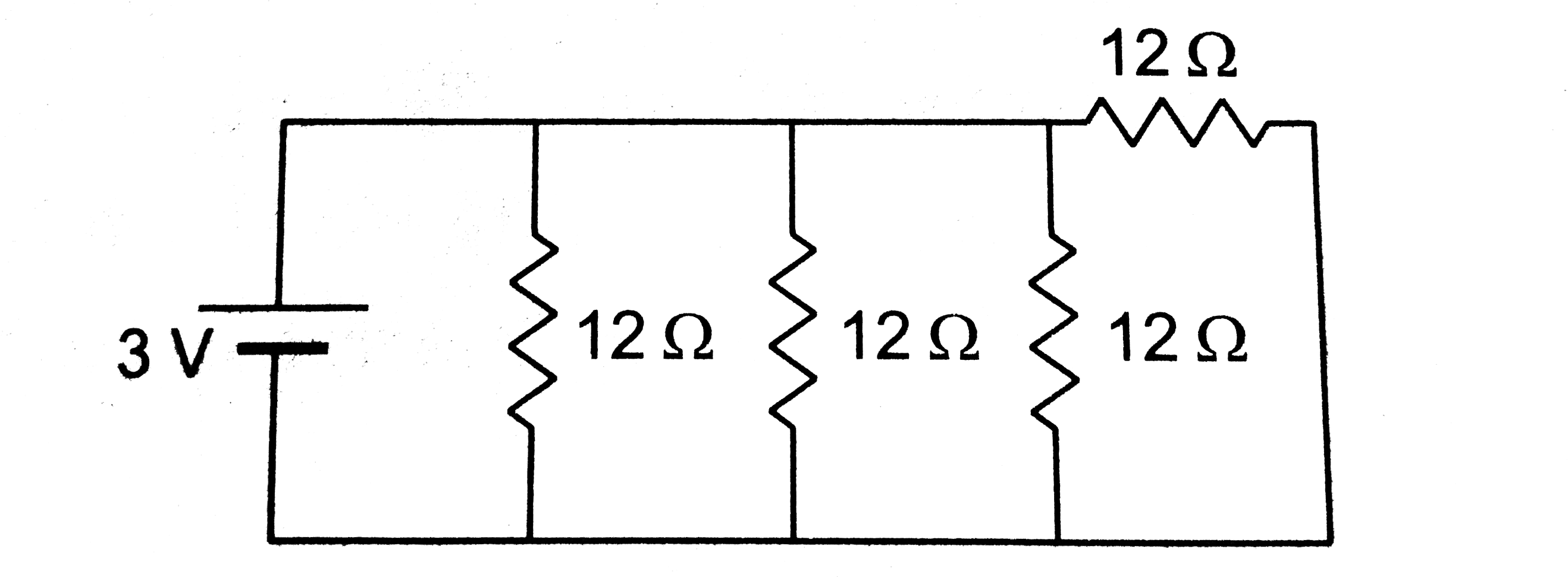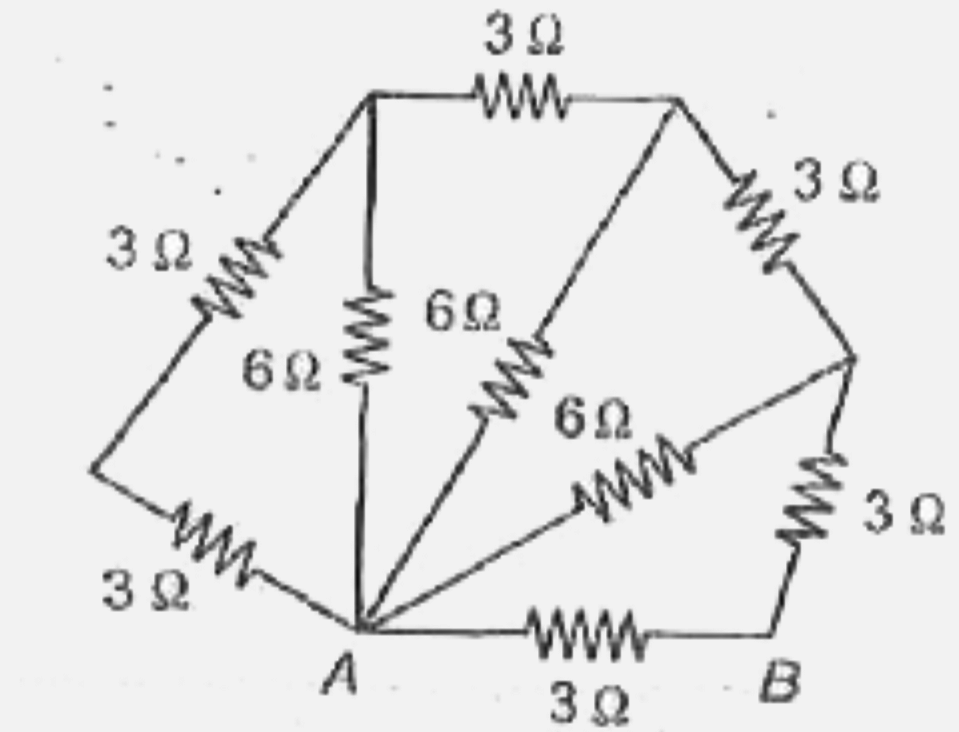Twelve identical resistances arranged on all edges of a cube. The resistors are all the same. Then find the equivalent resistance between the edges A and B as shown in figure.

R12(10+4K−5K2)
R6(10+4K−5K2)
R12(5+2K−5K2)
R6(5+2K−5K2)
The correct Answer is:A
70Ω
Topper's Solved these Questions
- CURRENT ELECTRICITYBOOK - NARAYNACHAPTER - CURRENT ELECTRICITYEXERCISE - Level 5
42 Videos
- COMMUNICATION SYSTEMBOOK - NARAYNACHAPTER - COMMUNICATION SYSTEMEXERCISE - Level-II(H.W)
25 Videos
- DUAL NATURE OF RADIATION AND MATTERBOOK - NARAYNACHAPTER - DUAL NATURE OF RADIATION AND MATTEREXERCISE - ASSERTION AND REASON
15 Videos
Similar Questions
Twelve identical resistances arranged on all edges of a cube. The resistors are all the same. Then find the equivalent resistance between the edges A and B as shown in.

View SolutionTweleve indentical resistor are arranged on all edfges of a cube. Then find the equivalent resistance between the corners 1 and 6 as shwon in fig 5.126(us nodal method)

View Solution
Knowledge Check
The equivalent resistance between A and B for the mesh shown in the figure is
 A16ΩB30ΩC4.8ΩD7.2Ω
A16ΩB30ΩC4.8ΩD7.2ΩFind the equivalent resistance between A and B in the given figure.
 A18ΩB2ΩC9ΩD6Ω
A18ΩB2ΩC9ΩD6ΩFind the equivalent resistance between the point a and b of the network shown in figure.
 A3B2C1D5
A3B2C1D5
Find the equivalent resistance between the point a and b of the circuit shown in figure
View SolutionFind the equivalent resistance between point a and b in the network shown in figure.

View SolutionFind the equivalent resistance between A and B in the give figure .

View SolutionA number of resistors are connected as shown in the figure. The equivalent resistance between A and B is

View SolutionThe equivalent resistance resistance between A and B of network shown in figure is

View Solution
